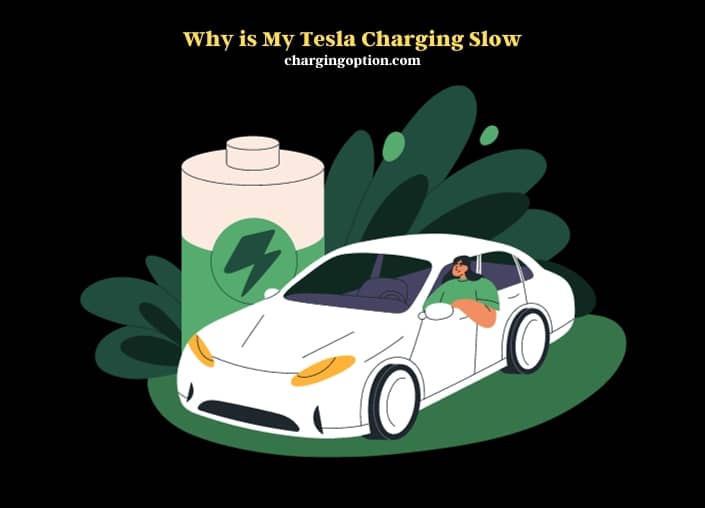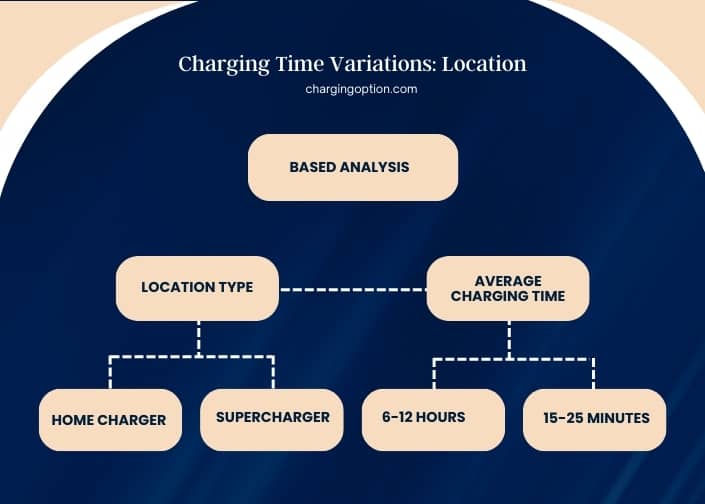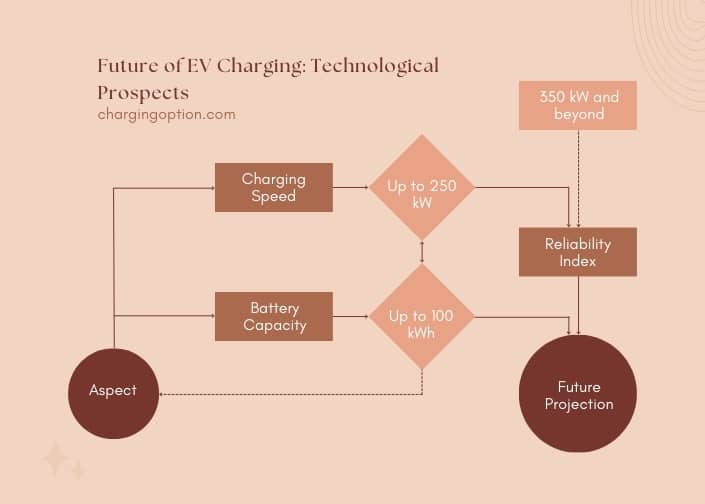Your Tesla might be charging slowly due to factors like battery condition, charger type, software settings, or environmental temperature. Each of these elements plays a crucial role in determining the charging speed of your electric vehicle.
The condition of the Tesla’s battery is a primary factor. Over time, batteries naturally degrade, losing their ability to charge quickly. This degradation is influenced by the number of charge cycles and overall usage. The type of charger being used also impacts charging speed. Tesla’s Superchargers are designed for rapid charging, while standard home chargers offer a slower pace.
Software updates from Tesla can affect charging speeds as well. These updates may optimize the charging process or, in some cases, limit charging speed to extend the battery’s lifespan. Environmental conditions, particularly extreme temperatures, can also slow down the charging process. Batteries are less efficient in very cold or hot weather, requiring more time to charge. Understanding these factors can help Tesla owners optimize their charging practices, ensuring faster and more efficient charging cycles for their electric vehicles.

Key Elements Influencing Tesla Charging Speed
Tesla’s charging speed can be influenced by several factors. The condition of the battery plays a crucial role. As batteries age, their ability to charge quickly diminishes due to chemical changes within the cells. The type of charger used is also significant. Tesla’s Superchargers offer rapid charging compared to standard home chargers. Software updates from Tesla can either enhance or hinder charging speeds. These updates may optimize charging algorithms or, in some cases, limit speed to preserve battery health. Lastly, environmental temperature impacts charging. Batteries charge slower in extremely cold or hot conditions due to the extra energy required to maintain an optimal operating temperature.
Charging Time Variations: Location-Based Analysis
Charging times for Tesla vehicles vary significantly based on location. Home charging stations typically offer slower charging speeds compared to Tesla’s Superchargers. This is due to differences in power output. Superchargers are designed for rapid charging, providing much higher kilowatt outputs. The charging infrastructure in different regions also affects charging times. Areas with advanced EV infrastructure tend to have more rapid charging options. Geographic variations, such as local climate and grid capacity, also play a role. A table comparing average charging times at home stations versus Superchargers illustrates these differences.
| Location Type | Average Charging Time |
| Home Charger | 6-12 hours |
| Supercharger | 15-25 minutes |

Battery Health and Charging Efficiency
The health of a Tesla’s battery is a critical factor in its charging efficiency. Over time, batteries undergo degradation, losing their capacity to hold a charge. This degradation is influenced by the number of charge cycles – the more cycles a battery goes through, the less efficient it becomes. Regular maintenance and following Tesla’s battery care recommendations can prolong battery life. Tips for maintaining battery health include avoiding extreme temperatures, minimizing fast charging, and keeping the battery charge between 20% and 80% as much as possible. Proper long-term care can significantly impact the battery’s ability to charge efficiently.
Optimizing Your Tesla’s Charging Process
Several strategies can optimize the charging process for Tesla vehicles. Pre-conditioning the battery before charging, especially in cold weather, can enhance charging speed. Scheduled charging during off-peak hours not only benefits grid stability but may also improve charging efficiency. Adjusting energy-saving settings in the vehicle can conserve battery power, reducing the need for frequent charging. Regular software updates from Tesla often include optimizations for charging processes, ensuring the vehicle charges as efficiently as possible. Implementing these tips can lead to a more efficient and faster charging experience.
Future of EV Charging: Technological Prospects
The current limitations in electric vehicle (EV) charging technology are being addressed through ongoing research and development. These limitations include the speed of charging and the capacity of batteries to hold larger charges for extended periods. Future improvements in EV charging are expected to significantly reduce charging times and enhance battery life. The table below compares current Tesla charging capabilities with projected future advancements.
| Aspect | Current Status | Future Projection |
| Charging Speed | Up to 250 kW | 350 kW and beyond |
| Battery Capacity | Up to 100 kWh | 150 kWh and beyond |

These advancements will not only improve the convenience of EV ownership but also contribute to the broader adoption of electric vehicles.
Frequently Asked Questions (FAQs)
Is Cable Condition Affecting My Tesla’s Charge Speed?
Cable condition can significantly impact the charging speed of your Tesla. A damaged or worn-out charging cable may not deliver the optimal current needed for fast charging, leading to slower charge times. Regular inspection of the charging cable for any signs of wear, tear, or damage is essential. If the cable is frayed, bent excessively, or has exposed wires, it could be the culprit behind slow charging. Using an official Tesla cable or a certified third-party option is recommended to ensure safety and efficiency.
Does My Tesla Charge Slower in Cold Weather?
Cold weather can indeed affect your Tesla’s charging speed. Lithium-ion batteries, like those in Teslas, are sensitive to temperature extremes. In cold conditions, the chemical reactions within the battery slow down, reducing its ability to accept a charge quickly. This is a normal response to low temperatures. To mitigate this, try to park your Tesla in a warmer location or use the pre-conditioning function via the Tesla app before charging. This warms up the battery, allowing it to charge more efficiently even in cold weather.
Can Software Settings Impact Charging Speed?
Software settings in your Tesla can impact its charging speed. For instance, if the charging limit is set to a lower percentage, your Tesla will charge slower as it approaches the set limit.
Certain software updates may adjust charging parameters to preserve battery health, which can sometimes result in slower charging speeds. It’s always a good idea to check the latest software updates and understand any changes they bring to your vehicle’s charging behavior.
Does Frequent Supercharging Affect Charging Speed Over Time?
Frequent use of Superchargers can affect your Tesla’s charging speed over time. While Supercharging is designed for speed and efficiency, its high power output can strain the battery if used excessively. Over time, this can lead to a slight reduction in the battery’s peak charging rate, a measure Tesla takes to preserve the long-term health of the battery. For daily charging, it’s recommended to use a home charger and reserve Supercharging for long trips.
Can Electrical Issues at Home Affect Tesla Charging?
Electrical issues at home can affect the charging speed of your Tesla. If your home’s electrical system is outdated or not properly configured for EV charging, it may not provide the necessary power for optimal charging. Issues like voltage drops or fluctuating power supply can lead to slower charging speeds. It’s advisable to have a professional electrician inspect and, if necessary, upgrade your home’s electrical system to ensure it can support the demands of EV charging.
Does the Age of My Tesla Battery Influence Charging Speed?
The age of your Tesla’s battery can influence its charging speed. As the battery ages, it undergoes natural wear and tear, which can reduce its maximum charge capacity and its ability to charge quickly. This degradation is a gradual process and is influenced by factors like charging habits and total mileage. While Tesla batteries are designed for longevity, older batteries may not charge as fast as they did when new, reflecting the natural lifecycle of lithium-ion batteries.
Summary
This article has examined various aspects affecting Tesla’s charging speed, including battery condition, charger type, and environmental factors. It has also highlighted the differences in charging times based on location, the impact of battery health on charging efficiency, and provided tips for optimizing the charging process. Finally, it discussed the future of EV charging technology, outlining the expected advancements that will enhance the EV charging experience.
